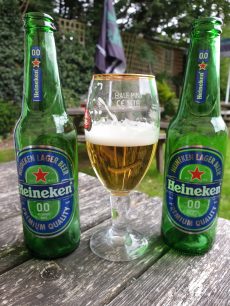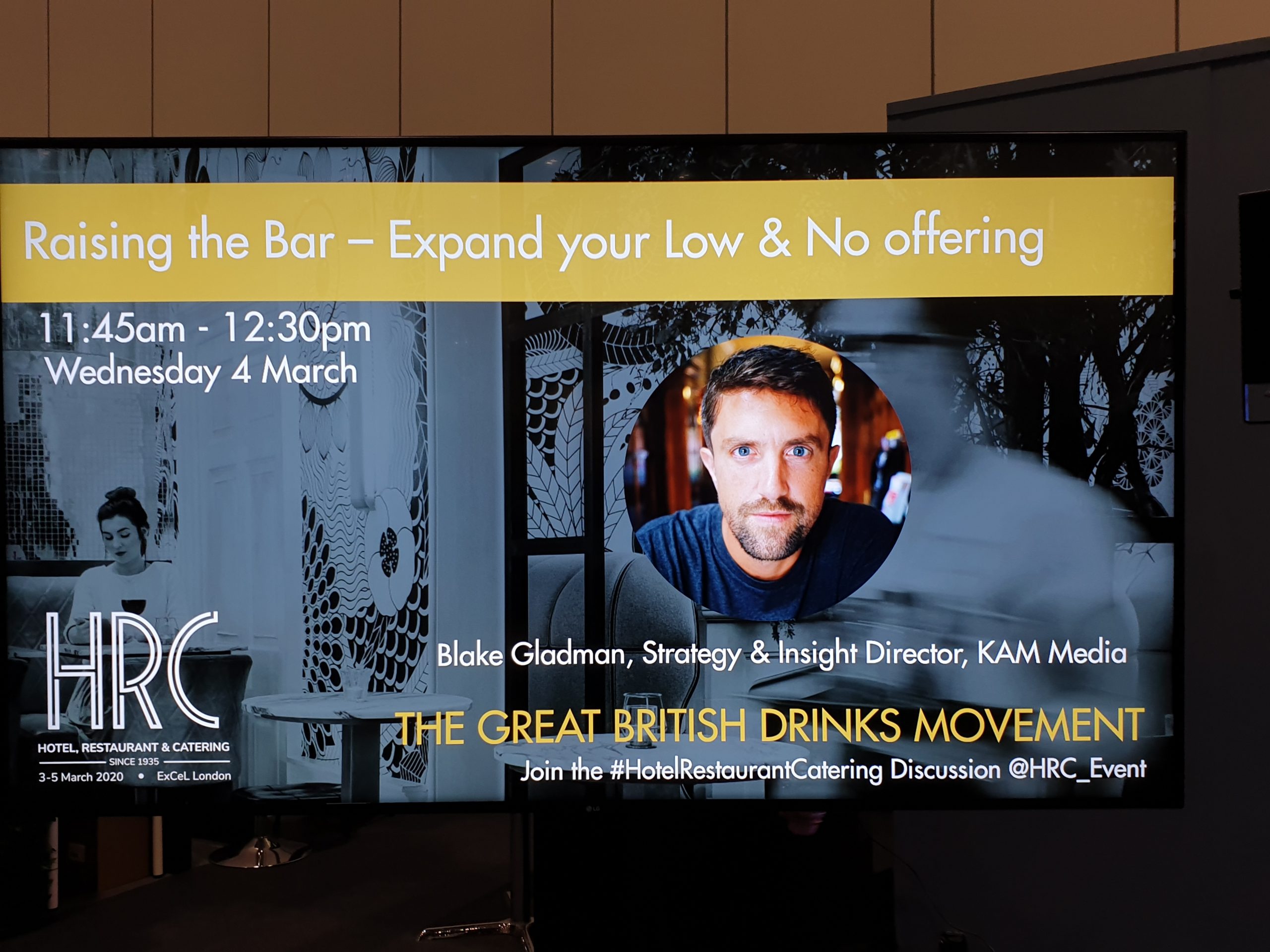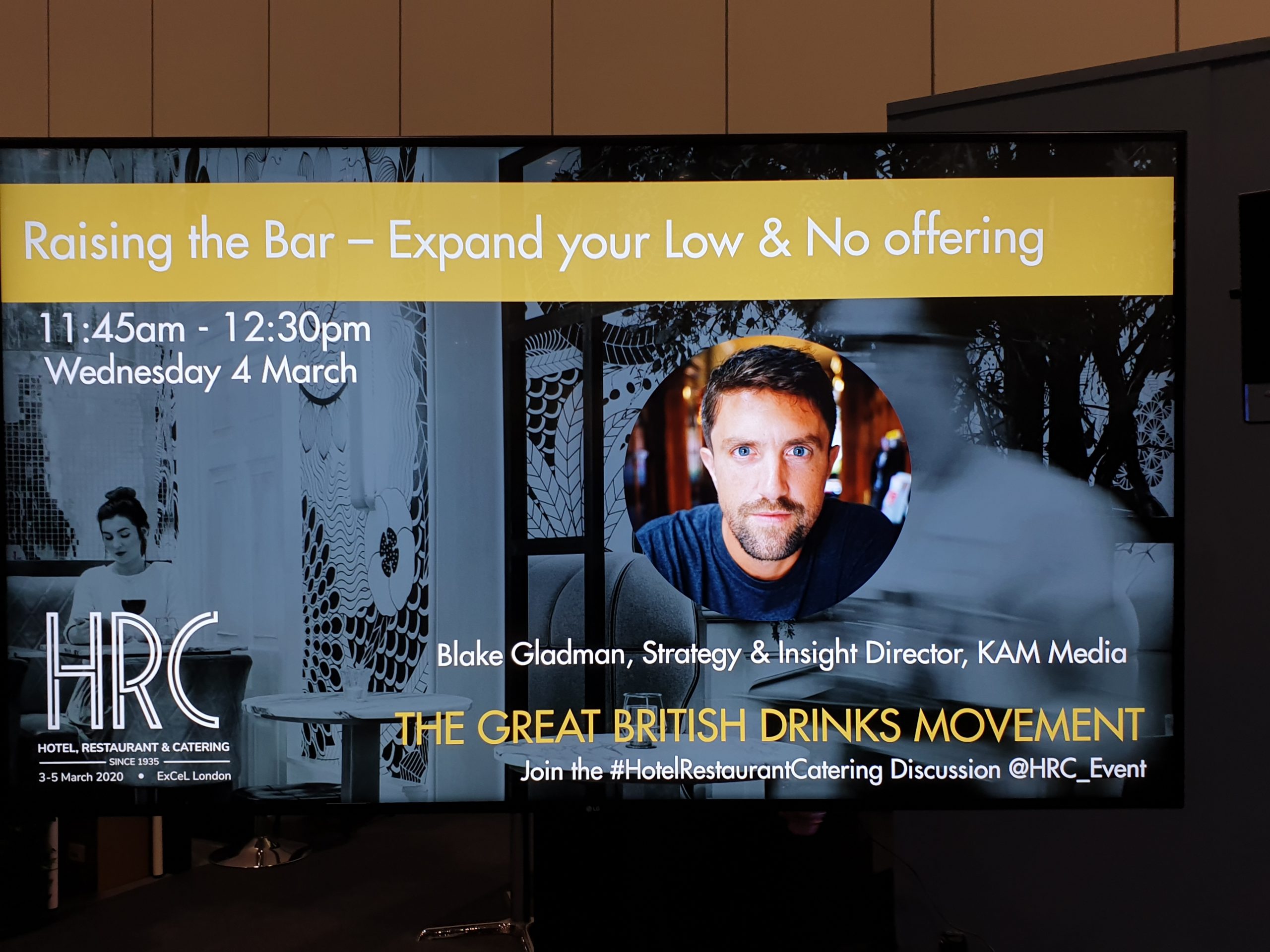Low and No Alcohol: a growing category that cannot be ignored!
Before COVID-19 struck, there had already been an explosion of new drinks on the market with little or no alcohol. Whether non-alcoholic soft drinks with sophisticated flavours, mocktails or other alternatives to traditional spirits, there is a huge amount of innovation in this category. Quality has also improved, spurred on by a sense of adventure, experimentation, wellness and lifestyle changes. Producers are keen to take their position at the premium end of the sector. Consumers are no longer faced with a lack of decent options.
Coronavirus has changed our lives and our drinking habits. It’s also had far-reaching effects on the hospitality industry. See Ryebeck’s recent article on The Impact of Lockdown on Beer Enthusiasts for more information. So when we are over this pandemic ?, what can we expect to see from the world of ‘low and no’? Let’s imagine a world where we can all go down the pub again and enjoy a drink with a crowd of friends …
Hotel, Restaurant and Catering Show (HRC)
Earlier this year, at the Hotel, Restaurant and Catering Show (HRC), Blake Gladman, Strategy and Insight Director of research consultancy KAM Media, gave a talk on the rise of the ‘Low and No’ alcohol category. With more people drinking at home as a result of COVID, this category has assumed increased importance, both commercially and in the health of the nation.
KAM Media Research
Last December, KAM Media spoke to 1000 consumers about their behaviours around these drinks. Questions tackled assumptions and perceptions about the category, where people buy from, awareness of ranges and barriers to purchasing. At the HRC, Blake presented highlights from KAM Media’s extensive research.
Consumption behaviours around ‘low and no’
One in five consumers in the UK are teetotal, rising to two in five among 18-24-year-olds. This latter group represents “the generation Z who are much more aware of moderation and so more likely to abstain from alcohol“, said Blake. “It will be interesting to see how this movement looks in 10 years’ time“, he added. “Once those 18-24-year-olds become the 35-year-olds and we see that new generation coming through, will we see the same or increases in those behaviours?”
Reducing alcohol consumption
Drinking behaviour in the UK is trending towards greater moderation, according to KAM Media. Over one in three people have attempted ‘Dry January’ or said they would be attempting ‘Go Sober’ October in 2020. The research showed that 62% of UK adults claimed to consume a maximum of five units of alcohol on average each week. Also 40% of alcohol drinkers said that they would be reducing their consumption in 2020, 47% of those for health reasons.
However, Blake was keen to stress that these are ‘claims’. “There’s an element of people underestimating how much they consume or knowing that they consume too much. They may be deliberately under-egging the amount of alcohol“, he noted. “Perhaps at a subconscious level, there’s a recognition that people need to reduce their consumption or would like to be able to do this.”
KAM Media’s figures show that 329 million adult pub visits in 2019 did not include an alcoholic drink. Lockdown and other social restrictions have resulted in more people drinking at home. Only time will tell whether this will lead to a long-term increase in alcohol consumption. However, as Ryebeck’s earlier report mentioned, beer enthusiasts drank lower quantities overall. So, there’s nothing to support any notion that we Brits just boozed our way through lockdown and further social restrictions.
Reasons for consuming less alcohol
Crucial to understanding these findings is determining consumer motivations for greater moderation of alcohol. These fit into several categories, of which the top two are ‘general health concerns’ and ‘saving money’. However, for those looking to switch to low/no products, spending less isn’t always the case – see later in this review. Other reasons include losing weight and the desire not to lose out on opportunities to do alternative activities.
Flexible drinking
Blake sees much in common between the rise of the low/no category and that of veganism/vegetarianism. “We now see these meals front and centre on menus, not hidden away at the back. It’s the same for ‘low and no’. The category shouldn’t be an afterthought at the back of a menu! With social changes, it’s now come more to the forefront. People are switching to eating less meat or switching to drinking less alcohol. However, a larger proportion of people are looking to flex how they do it. We see the rise in ‘flexitarianism’ and perhaps something similar in alcohol. There’s a similar mindset in terms of moderation if people are looking to flex when and where they drink alcohol. Other times, they automatically would have thought about having an alcoholic drink. Now there are greater options and potentially, they can make a better choice.”
So, it’s not just about switching off alcohol completely. It’s about alternating between drinking ‘low and no’ and alcoholic drinks as a way to reduce alcohol consumption on a night out. Approximately, one in six consumers are looking to mix between the two categories, including 22% of 18-34-year-olds.
Maintain customer experience
The challenge for the industry is to ensure that when the consumer chooses a low/no or traditional alcoholic drink, they receive exactly the same the experience and customer service. For Blake, this is key, “whether it’s in the taste profile of the drink, how it’s served or everything else that comes with it.”
Brewdog took this concept one step further by opening the world’s first alcohol-free bar in London. They have over ten beers on draught of 0.5% ABV or under plus bottles and cans. Importantly, the experience and atmosphere resemble a regular Brewdog bar. “It’s everything you’d expect from a pub experience“, described Blake. “People who drink low or no alcohol beer want to go to a pub and not have a different experience“, he added.
Consumer awareness
Among two-thirds of consumers polled, there is more awareness about ‘low and no’ options within beer than other drinks. In contrast, less than one in two were aware of the choices in either wine or cocktails. So, the onus is on operators to drive that awareness, believes Blake. This can be via menus, through advertising or displayed in more prominent positions in retail environments and pubs.
Encouragingly, newspaper supplements have begun to include recommendations on a more regular basis. Also, supermarket ranges are growing, sometimes with whole aisles dedicated to ‘low and no’ options. However in pubs, only one in four people have noticed ‘low and no’ brands. Often, these drinks are hidden at the bottom of a packed fridge. As a result, the customer may only find one if they specifically ask for it. More awareness and product visibility would surely see an increase in sales of these products. This is particularly relevant at the premium end of the category.
Pubs and restaurants
The pandemic has skewed our opportunities to visit pubs and restaurants. However, the findings from KAM Media’s research remain very relevant today. Roughly one in four pub visits and one in three restaurant visits are non-alcoholic. Together with the statistics showing that one in five people are teetotal, this shows that consumers are flexing their approach much more. Many of these visits, Blake explained, could be work-related or simply a lifestyle choice at the time. This highlights the size of the market and the potential opportunities to increase consumer spend on more premium ‘low and no’ alcoholic brands rather than the traditional better-known ones.
How to drive consumer choice when away from home?
KAM Media’s research show that 45% people would look at the menu when deciding on a non-alcoholic drink. Around one in three will have their usual drink. Approximately one in five will look behind the bar and a further one in five will ask staff. So, it is clear that hiding choices on a menu or at the bottom of a fridge limits opportunities to consumers.

Alcohol-free lager in a pub garden
There is also a big opportunity to increase the knowledge of staff. They can then offer alternative choices to the usual soft drinks, talk about flavour profiles and inspire consumers to try something new.
Barriers and perceptions around the ‘low and no’ category
Perhaps the biggest challenge to the industry is overcoming consumer pre-conceptions. Out of all the reasons identified, 33% of people believe that the drinks don’t taste the same as their alcoholic equivalents. Therefore, they would rather have something different, probably a regular soft drink. Almost one in five people wouldn’t switch to the category, because they like the taste of alcohol.
Prices of ‘low and no’ drinks
However, one of the most important factors affecting consumer uptake of these drinks concerns the pricing. There’s a perception that alcohol content is a significant driver towards the cost of a drink. Two in three people polled expect low and non-alcoholic drinks to be less expensive than their alcoholic equivalents. On average, customers expect ‘low and no’ drinks to be 20% cheaper, but one in five expect them to be more than 25% cheaper.
Are customers prepared to pay more if the product is right?
Over one in five customers would be prepared to pay more for a low/no version of their favourite alcoholic drink. In contrast, over one in three people would be willing to pay more for an ‘adult’ soft drink like Kombucha, compared to traditional options such as lemonade.
Currently, there are greater opportunities for premium soft drinks brands. The use of natural ingredients and premium packaging make them look as if they should be more expensive. So, how can the ‘low and no’ category win over new consumers, given the perception that alcohol is the main driver dictating the price of these products? Perhaps lessons can be learned from Brewdog. At their new AF bar, the price of their beers is what you’d expect to pay for a regular beer at a pub. This highlights further the benefit of making customer experience the same, whether it’s an alcoholic or a no-alcohol drink being served.
Experience of publicans
KAM Media spoke to 200 publicans about their views on the category. One in two have seen an increase in purchases. As a result, 66% increased their range in 2019 and a further 48% said they would be increasing their range in 2020. However, while 57% of publicans want to sell more ‘low and no’, 69% of them would like to see increased support from brands. Also, 61% would like to see more support from their pub company. Therefore, publicans are looking for inspiration and knowledge on which products they should be selling, how these should be served and how best to charge a premium price.
The hospitality industry has suffered particularly badly during the COVID-19 crisis and continues to do so. However, this research shows that the ‘low and no’ category does have a positive impact for the sector. Pubs, who have historically been built on alcoholic offerings, see diversification of that range as a crucial element for keeping the industry alive. As Blake said: “Hospitality is built on atmosphere and diversification, not just on alcohol. The pub is, above all else, a social space.” Let’s all hope it can continue to be so.
Final thoughts
The ‘low and no’ movement is still relatively young. Despite the coronavirus pandemic, the future does look promising with new products and companies dedicated to producing new premium brands. Indeed, since the original analysis, KAM Media describes continuing growth in the low and no alcohol category. Sales are reported to be up 30% in the off trade (Nielsen) and up by nearly 50% in the on trade (CGA).
Perhaps COVID really has encouraged many drinkers to become more health conscious, cutting down on sugar and alcohol in particular. A new generation of more discerning drinkers, particularly among 18-24 year olds is looking for quality, flavour and lower alcohol. On-trade venues have already been adapting with a better range of options. Bartenders look set to embrace ‘low and no’ cocktails as a core part of their offerings. Similarly, consumers drinking at home want a better choice of options with easy availability for purchases. These can be online, at supermarkets and specialist stores or direct from the producer.
In this new world, perhaps one thing is certain. We should all be able to look forward to a better choice of drinks wherever and whenever we can safely go.
For more articles on the latest drinks trends, including the ‘low and no’ category, visit Ryebeck’s Industry Insight pages.
Author: Robin Goldsmith of The Write Taste.






